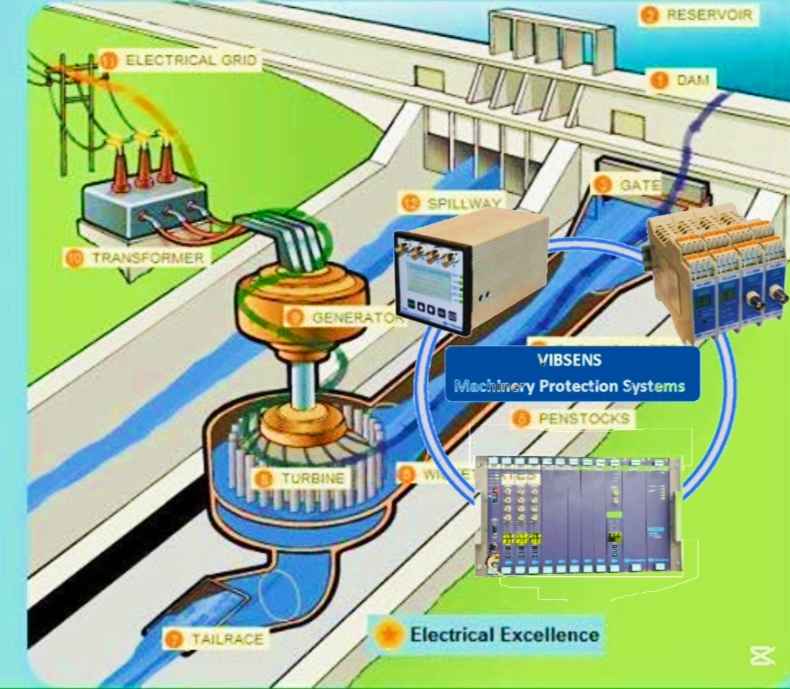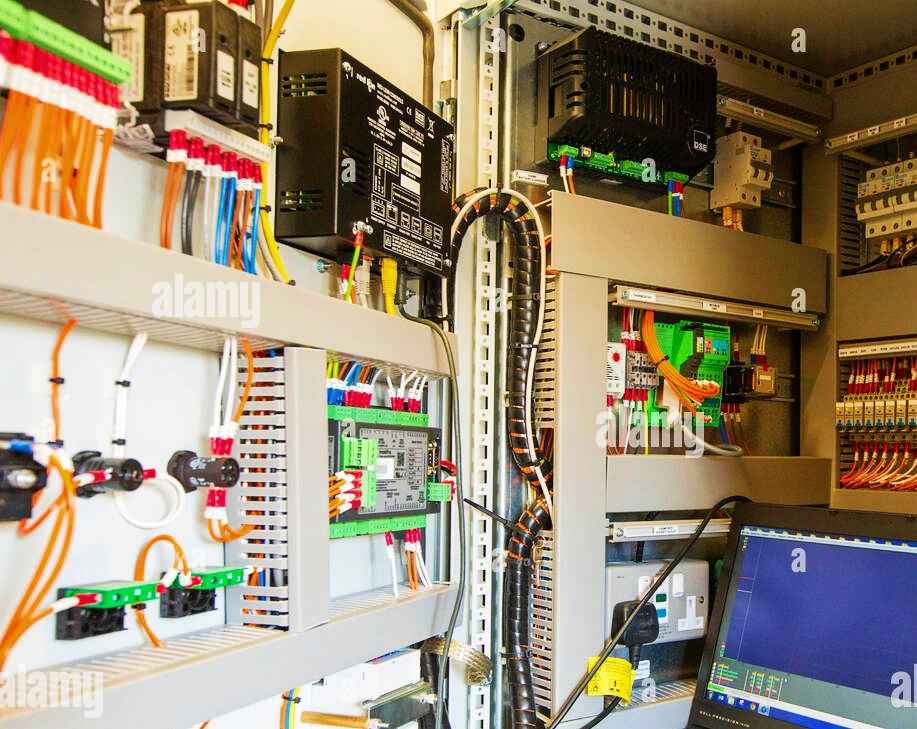
The goal of automating a hydropower plant is to make the entire plant process run automatically. This involves many steps that happen in order or at the same time. Some tasks include simple actions like opening or closing valves, turning equipment on or off. Other tasks control things that change over time, like keeping a machine running at a constant speed to stay in sync with other machines. So, a hydropower plant's operation includes both simple and continuous processes.
In the past, microprocessors were used for these tasks, but the number of relays (switches) didn’t change. With the use of PLCs (Programmable Logic Controllers), the need for many hardwired relays is reduced. A large PLC can handle all the operations. The advantage of using PLCs is that they are digital, which means less damage to the system, lower costs, and less maintenance. If the control system needs to be changed, it can be done easily by just updating the program without extra costs.
PLCs can perform many functions effectively. They control the entire plant's operations, such as speed control, load control, and system protection. PLCs are well-suited for systems that require discrete control (on/off actions). They are connected to SCADA (Supervisory Control and Data Acquisition), which monitors the plant’s processes. The sequence of events, like starting a machine, is programmed in a ladder diagram. Some steps are simple, like sensing switches, while others involve continuous actions or a mix of both.

Figure
PLCs combined with PC-based SCADA systems are used for plant control and data collection. This setup makes the system cost-effective and suitable for many hydropower plants. These systems, with their digital control, interface with a computer for redundancy and data storage, which helps in governing, unit control, protection, and data acquisition. They are also dependable, economical, and easy to obtain. These systems offer the backup of manual control in case of emergencies and are a low-cost option.
(b) Automatic Shutdown (Normal, Emergency)
(c) Digital Governing using PLC
(d) Speed Governing
(e) Position Control
(f) Excitation Control with PLC
(g) Protection System with PLC
(h) Alarm and Annunciation using PLC